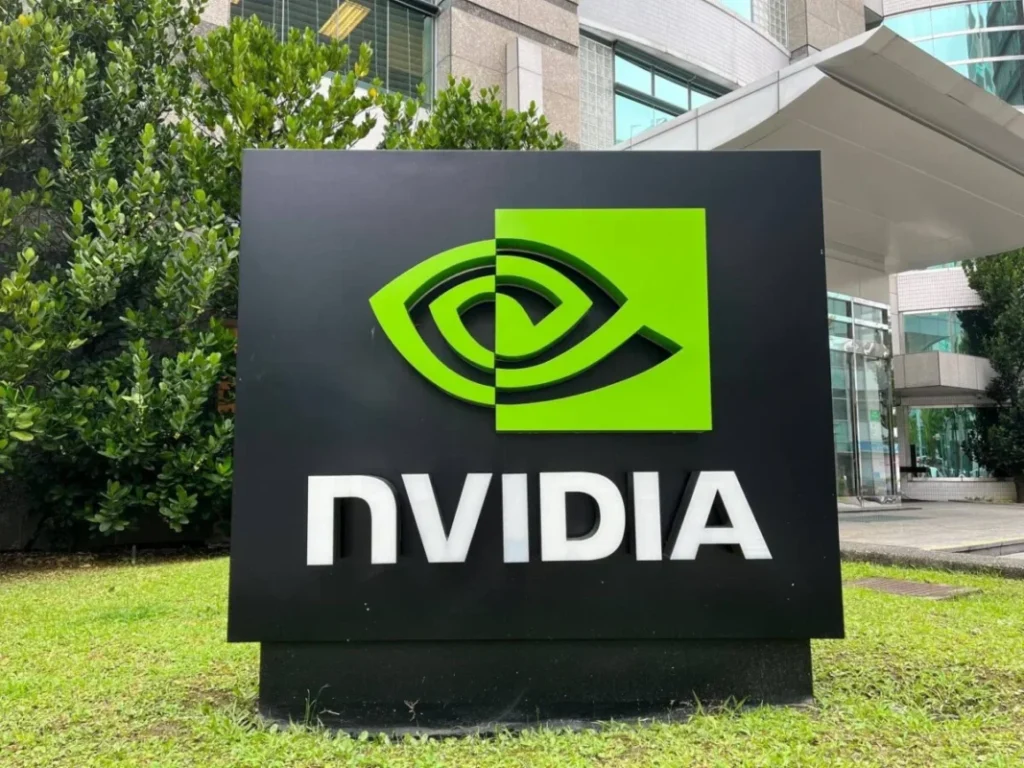Nvidia AI chip market cap has skyrocketed, crossing an astonishing $3.92 trillion. This historic milestone has placed Nvidia among the world’s most valuable companies, right alongside tech giants like Apple and Microsoft.
In the last few years, Nvidia has transformed from a company known mainly for gaming graphics cards into a global powerhouse in artificial intelligence (AI). Its innovative AI chips are now at the heart of data centers, autonomous vehicles, robotics, and countless other technologies.
This surge not only signals a major shift in the tech industry but also reflects broader trends shaping the global economy and future of AI.
How Nvidia became a leader in AI chips
Nvidia was founded in 1993, originally focusing on creating graphics processing units (GPUs) for gamers. The company’s early success came from its GeForce line of GPUs, which revolutionized gaming visuals. However, in the 2010s, Nvidia saw a bigger opportunity: artificial intelligence.
Traditional CPUs were too slow for the complex calculations required in deep learning and AI. GPUs, on the other hand, could process thousands of tasks in parallel. Nvidia’s decision to adapt its GPUs for AI workloads turned out to be a masterstroke.
In 2012, researchers using Nvidia GPUs won the ImageNet competition, a major milestone in computer vision. This achievement ignited massive interest in GPUs for AI, and Nvidia became the go-to provider of hardware for training neural networks.
From there, Nvidia continuously improved its chips, introducing architectures like Pascal, Volta, Turing, and Ampere. The latest Hopper architecture, launched recently, has made AI model training and inference even faster and more energy-efficient.
The boom in AI demand fuels Nvidia’s growth
The demand for AI chips has exploded in recent years, driven by tech giants racing to develop advanced AI models and services.
OpenAI’s ChatGPT, Google’s Bard, Microsoft’s Copilot, and other large language models all require powerful chips to train and operate efficiently. As these AI tools expand into mainstream use, the need for Nvidia’s chips keeps increasing.
In addition to consumer applications, businesses are adopting AI for data analysis, recommendation systems, cybersecurity, and process automation.
Meanwhile, industries like healthcare, finance, manufacturing, and automotive are investing heavily in AI-powered solutions. This widespread adoption translates into booming sales for Nvidia’s data center chips.
Financial performance and market impact
Nvidia’s revenue has grown dramatically, with recent earnings reports repeatedly surpassing Wall Street expectations.
For example, in its latest quarter, Nvidia reported revenue of $26 billion, more than triple compared to the same quarter last year. Data center revenue alone contributed over 70% of this figure, reflecting the dominance of AI chips in its business model.
Nvidia’s strong financial performance has fueled investor confidence, pushing its stock price to new heights. Its share price has risen more than 200% in the past year alone.
As a result, Nvidia’s market cap now stands at $3.92 trillion, making it the third most valuable public company in the world.
This valuation puts Nvidia ahead of other major players like Amazon and Alphabet, and firmly establishes it as a central force in both the semiconductor and AI sectors.
Strategic moves and partnerships
To maintain its lead, Nvidia has been aggressively expanding its ecosystem. The company has formed partnerships with major cloud service providers, including Amazon Web Services, Microsoft Azure, and Google Cloud.
These collaborations ensure that Nvidia’s GPUs are the default choice for customers building AI models in the cloud.
Moreover, Nvidia has launched its own AI software stack, called CUDA, which makes it easier for developers to use its GPUs. The CUDA ecosystem has become so entrenched that many AI researchers and companies now design their solutions specifically for Nvidia hardware.
Nvidia has also made strategic acquisitions, such as Mellanox Technologies, which strengthened its data center capabilities, and Arm Holdings (though that deal ultimately fell through due to regulatory concerns).
All these moves have solidified Nvidia’s position as the most critical supplier in the AI hardware supply chain.

The role of AI chips in future technologies
Nvidia’s AI chips are not limited to data centers and big tech companies. They play an essential role in shaping emerging technologies that will impact everyday life.
Autonomous vehicles
Self-driving cars rely heavily on AI to process real-time data from cameras, radars, and sensors. Nvidia’s DRIVE platform provides the processing power required for autonomous driving, making it a key partner for car manufacturers like Tesla, Mercedes-Benz, and Volvo.
Robotics and automation
Industrial robots and smart factory systems use AI to improve efficiency and safety. Nvidia’s Jetson platform offers the edge computing power needed to make machines more intelligent and responsive.
Healthcare
AI chips enable faster analysis of medical images, more accurate diagnostics, and even drug discovery. Hospitals and research institutions increasingly depend on AI-powered systems for personalized treatments and operational efficiency.
Gaming and virtual reality
While AI chips are transforming industries, Nvidia hasn’t forgotten its roots. The company continues to push the boundaries of gaming graphics, integrating AI for realistic rendering and smoother gameplay. Technologies like DLSS (Deep Learning Super Sampling) showcase how AI can enhance gaming experiences.
Risks and challenges ahead
Despite its phenomenal rise, Nvidia faces several challenges that could impact its long-term growth.
Supply chain issues
Like other semiconductor companies, Nvidia is vulnerable to global supply chain disruptions. Any shortage of raw materials or manufacturing delays could hurt its ability to meet demand.
Growing competition
While Nvidia currently dominates the AI chip market, competitors are not standing still. AMD, Intel, and startups like Graphcore and Cerebras are developing their own AI-focused chips. Big tech companies like Google (with its TPU) and Amazon (with Inferentia) are also building custom chips to reduce dependence on Nvidia.
Regulatory scrutiny
Nvidia’s rapid growth and influence have attracted the attention of regulators worldwide. Antitrust concerns, export restrictions (especially involving China), and national security considerations could create hurdles for Nvidia’s international business.
High valuation risks
A market cap of $3.92 trillion sets high expectations. If Nvidia fails to maintain its growth trajectory or if the AI boom slows down, its stock price could face significant corrections.
Analysts’ perspective on Nvidia’s future
Despite the challenges, most analysts remain bullish on Nvidia’s prospects. The company’s early investment in AI, strong ecosystem, and continued innovation provide a solid foundation for future growth.
According to several investment research firms, Nvidia is well-positioned to benefit from what they call the “AI supercycle” — a period where global spending on AI technologies accelerates dramatically.
Moreover, Nvidia’s diversification into different industries provides some cushion against market fluctuations in any single sector.
What this means for investors
For investors, Nvidia represents both an incredible growth story and a high-stakes bet on the future of AI.
Those who believed in Nvidia’s AI vision early on have seen massive returns, with many investors calling it a “once-in-a-generation” stock. However, new investors need to weigh the potential risks and consider the volatility that comes with such a high valuation.
Nvidia’s success has also had a ripple effect on the broader market. It has driven growth in other semiconductor stocks and AI-focused ETFs. As Nvidia continues to grow, its performance can influence entire index funds and even the overall tech sector sentiment.
Broader impact on the semiconductor industry
Nvidia’s rise highlights the strategic importance of semiconductors in the modern economy. Chips are now as crucial as oil once was, powering everything from smartphones and electric cars to data centers and national security systems.
The global race to develop advanced chips has intensified, with governments investing billions to ensure domestic chip production and reduce dependence on foreign suppliers.
Nvidia’s dominance in AI chips also sets the stage for more innovation in the semiconductor space. Competitors are pouring resources into R&D, and new startups are emerging with specialized solutions for specific AI tasks. This intense competition will likely accelerate technological advancements, benefiting consumers and businesses alike.
The road ahead: Opportunities and responsibilities
Nvidia’s success is not just about profits. It also carries a huge responsibility as a leader in AI hardware. The company will play a major role in shaping how AI is used, who gets access to it, and how it affects jobs and society.
As AI becomes more integrated into our daily lives, there are ethical considerations around privacy, bias, and automation that Nvidia — and its partners — will need to address.
Nvidia’s stated mission is to “enable AI for every industry.” If it continues to lead responsibly, it can help ensure that AI technologies bring more good than harm.
Conclusion: A new tech giant era
Nvidia AI chip market cap reaching $3.92 trillion is not just a financial headline — it symbolizes a shift in technological power and priorities.
From a company making gaming GPUs to a leader in AI hardware, Nvidia has transformed itself into one of the most important technology companies in the world.
Its chips are now powering breakthroughs in healthcare, transportation, energy, and entertainment, shaping the future in ways that were unimaginable just a decade ago.
While the journey ahead will have challenges, Nvidia’s vision, technological leadership, and strategic moves have positioned it at the heart of the next wave of innovation.
Investors, businesses, and everyday people alike will be watching closely as Nvidia continues to define what is possible with AI.
Do follow on Instagram
Read Next – How the $3.3 Trillion Tax and Spending Plan Impacts Businesses






